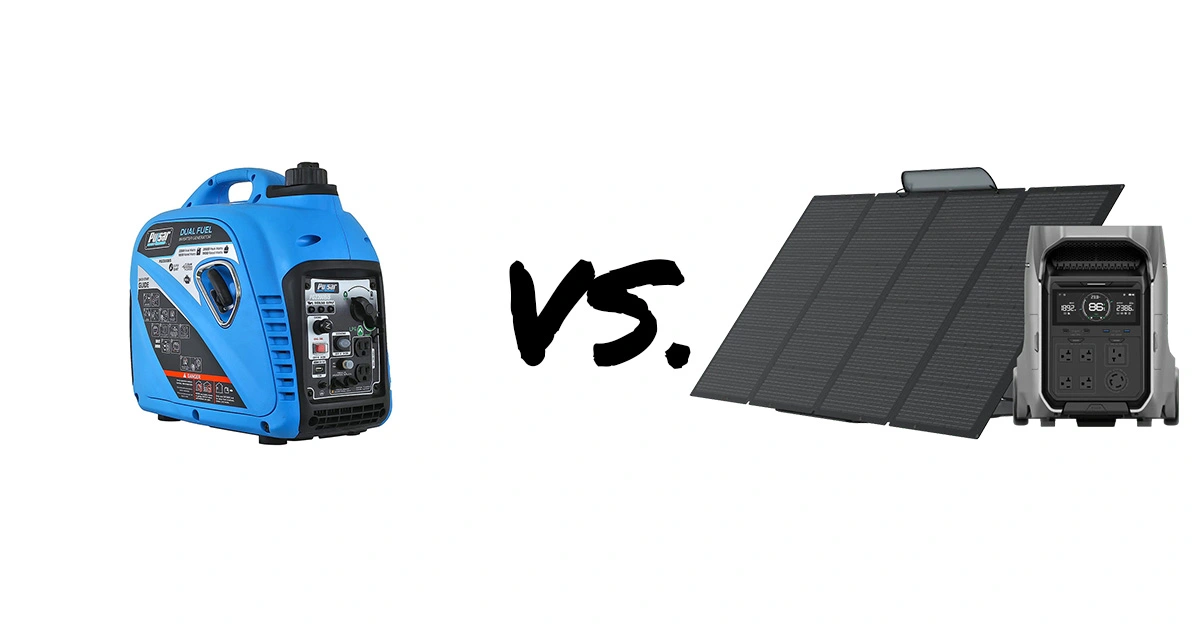When it comes to generating electricity, the gas generator has been the tried-and-true standby for decades. But there’s a new rival on the block, the so-called solar generator. And it deserves some of your attention as well. Even if it’s just to rule it out, it’s worth knowing the difference between a solar generator vs. a gas generator.
You can guess from the name that the solar generator runs on solar power while the gas generator runs on some type of gas, usually gasoline, propane, or diesel. And this might make you think that these two types of generators are rivals that can never work together.
But there’s more to this story. In fact, using a solar generator with a gas generator is a great way to solve electricity needs of all sorts. These generators have very different functions and uses, along with different price points and downsides.
Let’s uncover the differences between solar generators and gas generators.
We carefully select the products and services we link to. If you buy through our links, we may earn a commission. There’s no extra cost to you and it helps us provide this information.
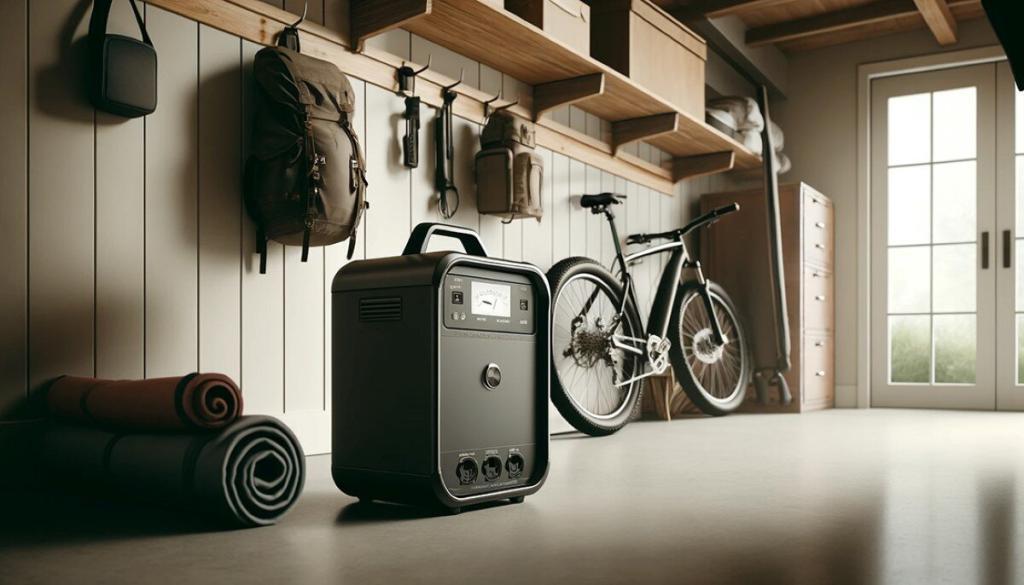
The Short Summary: Battery Backup vs. Fuel Boost
The truth is that both solar and gas generators might have a place in your energy supply. One is great as an inexpensive burst of power, while the other is a low-maintenance energy solution with a lot of flexibility.
The trusty gas generator is best for:
- Create a lot of power quickly and easily
- Using high-powered devices for short periods
- Keeping costs down
But the downsides to gas generators can be very annoying and quite expensive. You always need the proper fuel and you must maintain the engine (oil changes, spark plugs, air filters). Worst of all, you can only use power if the gas generator is running. Even for very small power needs like charging a phone, you have to power up the big engine.
Solar generators consist of two parts, solar panels and a power station (battery with inverter). This best parts about solar generators are:
- Low-maintenance setup that can power devices big and small
- Silent energy that constantly charges whenever sun shines
- Batteries allow for continuous power, even though stormy days and nights
The worst part about solar generators is the more costly upfront investment. This is especially true if you want to generate a lot of power. It’s also a little more difficult to deal with times when the sun doesn’t shine, but when paired with the right amount of batteries, this can be resolved. You can use solar power at night and other times without sun.
While both have their pros and cons, using solar generators with gas generators may be your ideal solution. You can rely on the solar and battery system for most situations, then if you need more power, turn on the gas generator for a big burst of energy.
If you just want an emergency solution that you don’t think you’ll use often but want to have big power available for your entire home, a fuel generator is likely best.
But if you want a lower-maintenance system that can be used often and lower or eliminate your electricity bill, solar generators are ideal. They’re also much better for charging small devices, as well as the ideal portable solution for camping adventures or other events away from power outlets.

What Are They?
Before we start digging into details, let’s start with the basic understanding of both types of generators.
What Is a Solar Generator?
A solar generator is a combination of products that use sunlight to generate electricity and power devices. While this isn’t a strict textbook definition, it’s usually a combination of two devices:
- Solar Panels
- Portable Power Station
Most people are familiar with solar panels. These are photovoltaic (PV) panels containing solar cells. When left in sunlight, the electrons within the solar cells become excited and the panels create electricity. The more sunlight on the panels and the more efficient the cells, the more electricity you get.
Portable power stations are the other part of solar generators. They look a bit more like a generator because they are smaller portable boxes. But power stations have a lot more than fuel generators. Inside a power station you’ll find:
- Charge controller: Safely pulls in energy from solar panels and other sources
- Battery: A built-in way to store energy to use now or later
- DC outlets: USB ports, car cigarette port, and other outlets directly connected to the battery
- AC inverter and outlets: Converts the battery’s energy to a normal household plug
By using the solar panels with the power station, the solar generator turns into a portable power source that can run nearly anything. The factors that determine what it can power are things like how many watts of solar panels you connect, what size battery it has, and how powerful the AC inverter is.
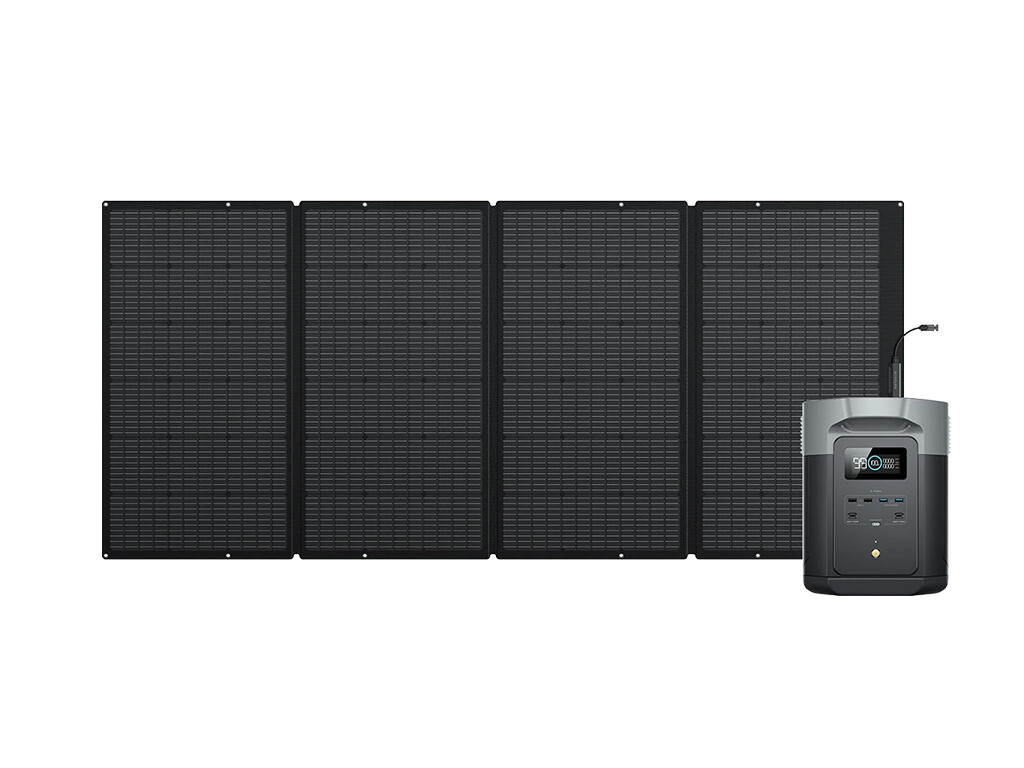
|
EcoFlow DELTA 2 Max Solar Generator with 400W Portable Panel |
Buy on EcoFlow Buy on Amazon |
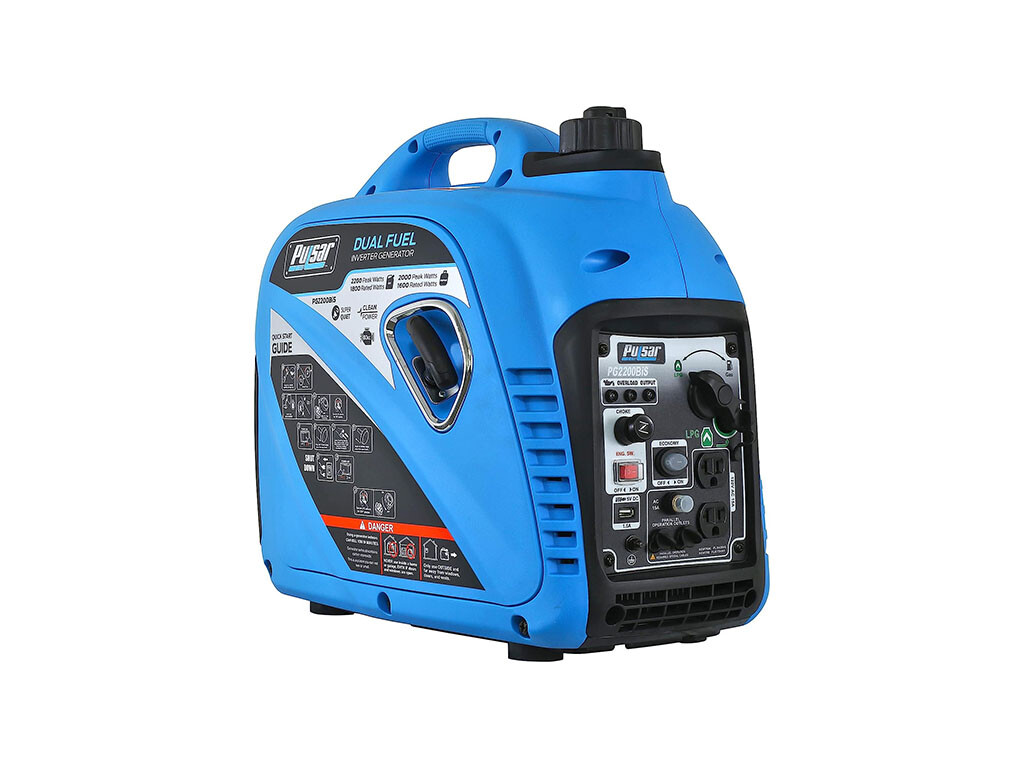
What Is a Gas Generator?
This one is a lot easier. A gas generator uses some type of fossil fuel to power an engine. This engine turns an alternator or inverter, which creates electricity.
Gas generators can use many different types of fuels. Gasoline, diesel, and propane are the three most common. You can also have dual fuel generators that can run on more than one type of fuel. These can be a great solution to make the best out of the convenience of gasoline or diesel, but the long-term storage ease of propane.
The best thing about gas generators is that they can provide a lot of electricity. Where portable power stations start to get very expensive around 2,000W, that’s basically entry level for gas generators, like this solid Pulsar 2,200W Dual Fuel Gas Generator. And if you need more power – like to run an air conditioner – you can easily get larger gas generators with a modest bump up in the budget.

|
Pulsar 2,200W Portable Dual Fuel Generator |
Buy on Amazon |
Power Needs: Big or Small
Identifying your power needs is one of the most important parts of figuring out which type of generator is right for your situation. There are two parts to this:
- How much power do you need at one time
- How long you need to power devices for
If you want to simply charge a few phones or small devices, you only need a small amount of power to last many hours. Solar generators are a great fit.
On the other hand, if you want to power an air conditioner, fridge, and an entire house full of devices – but only for a couple hours or so during a short blackout – then you need a big amount of power that only needs to last a short amount of time. Gas generators are a cheaper way to get this. Or you can go with large power stations, like the EcoFlow Delta Pro Ultra, to get the job done with a long list of other benefits, but with a bigger price tag.
These are two very clear cut situations. Low power needs for a long time is perfect for solar panels and batteries. And big power needs for a short time is great for a gas generator unless you want to go deep into solar energy.
It’s also good to know when one type of generator will not meet your needs well. For example, gas generators cannot provide power when they’re not running. And they basically run at full power no matter what, constantly chewing through the fuel supply at a stable rate.
This makes gas generators a poor solution for small power needs over a long time. Keeping small devices charged or running some LED lights means you’ll have a big engine running, producing a lot of wasted energy. But it’s a great place for solar with batteries, or a solar generator. Then you can let the battery soak up the energy during the day while charging your devices, and keep them charging and running lights all night long. Without wasting a drop of energy. This is also when power stations are the most affordable, like the small but mighty Bluetti AC50B.
It’s crucial to match your power supply to your power needs.
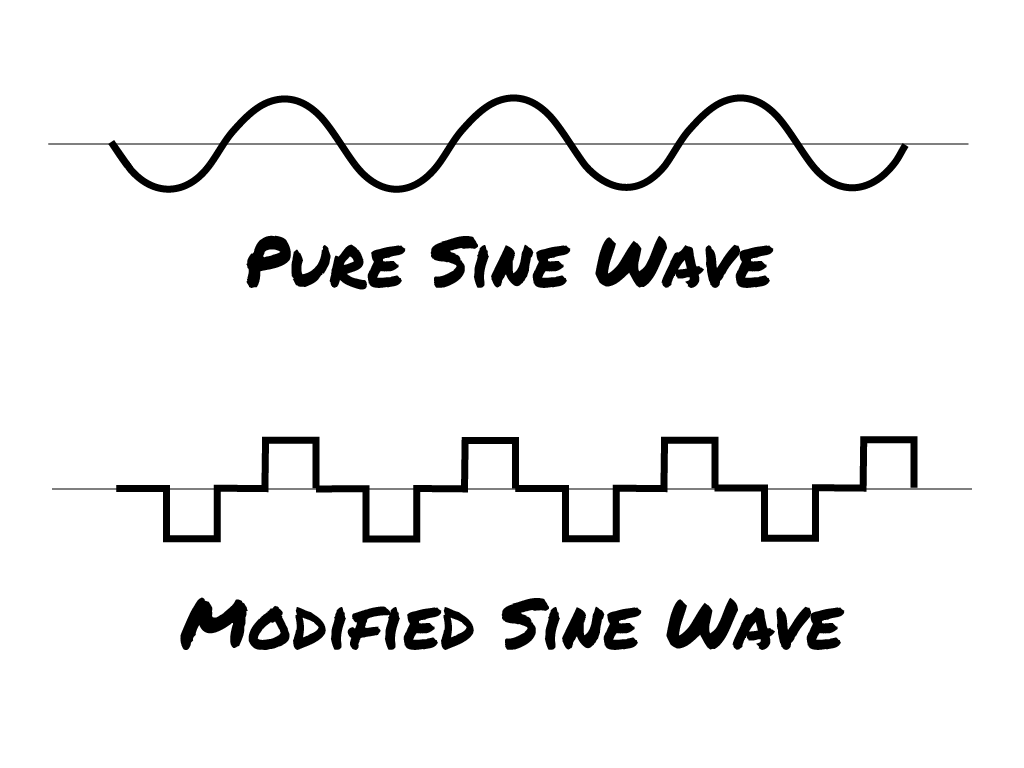
Sensitive Electronics: Modified Sine vs. Pure Sine Inverter
Not all AC inverters are made the same. While you can get solar generators and gas generators with inverters, they might not behave the same way.
Of course, the wattage rating can differ. This goes back to the power use we covered in the above section. The higher the inverter’s rated watts, the more power it can send out at one time.
But that’s only part of the picture.
The other aspect is whether it’s a pure sine inverter or a modified sine wave inverter. This is how “clean” the output power is.
For sensitive electronics, like computers, televisions, and other high-end items that you don’t want to damage, using a pure sine wave inverter is best. This provides a stable flow of alternating current. If you inspect the actual AC waves, you’d see smooth curved lines going up and down.
Many gas generators use modified sine wave inverters. These have a more “dirty” energy supply. And if you were to inspect the AC waves coming off a modified sine wave inverter, you’d notice more jagged steps going up and down as the current alternates.
High-quality solar generators and portable power stations usually feature pure sine wave inverters. This is why brands like EcoFlow, Bluetti, and Anker are worth trusting.
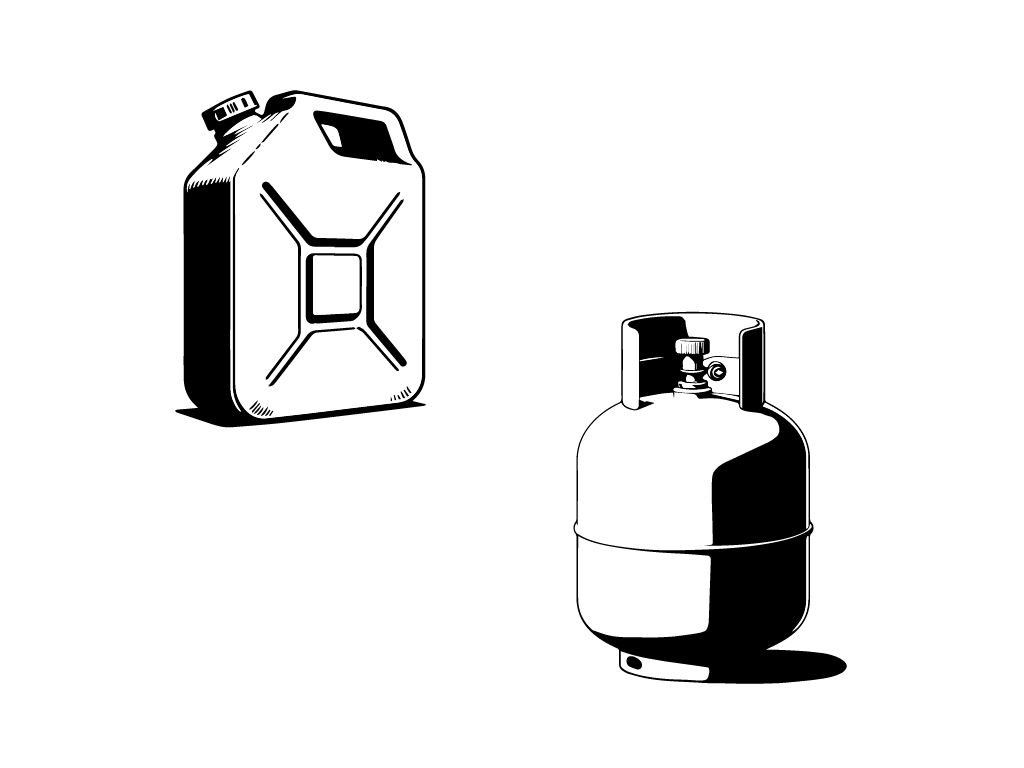
Other Considerations: Noise, Maintenance, and More
It’s not just the power demands and AC inverter. The differences between solar generators and gas generators also include things like the fumes and noise they create, the maintenance required, and other things like ports, warranty coverage, and more.
The most obvious example is the noise and fumes. Solar generators are silent and don’t generate any harmful exhaust fumes. You can put the panels in any sunlight, then put the power station almost anywhere else. But with a gas generator of any type, it must be properly ventilated. And it’s going to make some noise.
This might not be a problem if you have space at home and only run it seldomly. But if you have close neighbors or are using a gas generator somewhere else like a campground, then you may be quite disruptive. It’s also against the rules at many campgrounds to use a noisy generator at night. You’ll need a battery unit to take over, and you could just use a solar generator as the battery and power generator.
Another downside of gas generators that doesn’t exist with solar generators is maintenance.
The gas generator’s engine requires oil changes, spark plug replacement, and air filter changes. You also may need to check propane fittings and other accessories. Solar generators are nothing more than plugs and connectors. Once you get it set up correctly, you’ll have nothing to do other than hit a button to turn it on and off or watch the monitor to see the battery level. Many of them also have apps to remotely control or monitor your power station and solar energy supply.
Power stations also go beyond what gas generators offer in other ways. They include things like:
- USB-A and USB-C ports
- Cigarette lighter outlets and DC barrel plugs
- 3 year, 5 year, and even 10 year long warranty coverage
- Customer service ready to answer questions
In general, solar generators are more feature-packed devices than basic gas generators. And much of this comes down to the fact that gas generators are much cheaper. Plus, gas generators don’t deal with small power needs very well.

The Combination: Dual Solar and Gas Generator
Combining both types of generators can offer the best solution. To do this, you use a fuel generator to charge a solar power station. Then you combine the strengths of both systems.
You can read all about this in our post on Dual Solar and Gas Generator.
The solar generator can store the power efficiently and provide a steady supply for your small to moderate needs. And most of the time, you can use solar panels to generate the power you need.
When you require a surge of power for heavy-duty appliances, you can crank up the fuel generator for a short burst of high energy. Or if you encounter many days of cloudy weather or other solar-related charging problems, using the gas generator as the backup power is perfect.
It also means you don’t waste extra energy created by the gas generator. You can run the gas generator for a short burst and the solar generator’s power station can absorb almost all of the power. Then turn off the gas generator and use the power station’s battery to run devices for a long time. In silence.
This hybrid approach ensures you have reliable power for any situation, maximizing efficiency and minimizing waste.
One of our favorite solutions is the EcoFlow Delta Pro 3 and the EcoFlow Dual Fuel 4000W Smart Generator. It’s an incredible system on the forefront of the portable power industry. And you’ll be very hard pressed to find better products on any end of the spectrum.

|
EcoFlow DELTA Pro 3 |
DP3 on EcoFlow Buy on Amazon |

|
EcoFlow 400W Rigid Solar Panel |
Buy on EcoFlow Buy on Amazon |
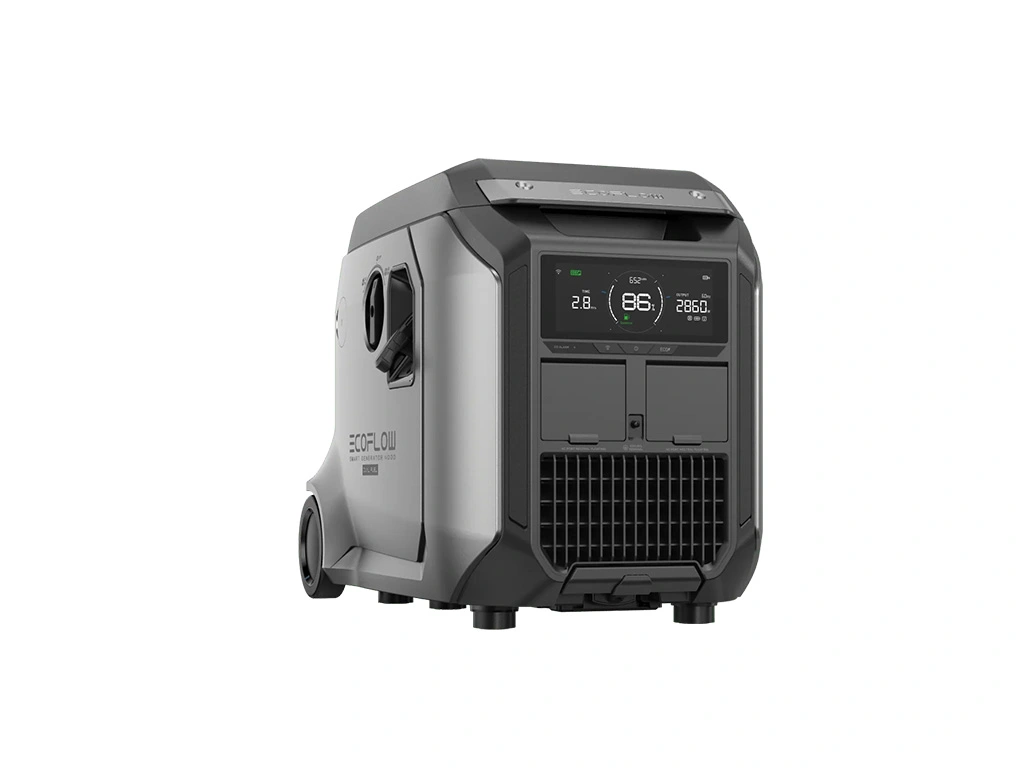
|
EcoFlow Smart Generator 4000 (Dual Fuel) |
4kWSG on EcoFlow |
Wrap Up: Solar Generator vs. Gas Generator
Gas generators are reliable. They provide quick, substantial power using gasoline, propane, or diesel. However, they are noisy and require continuous fuel and maintenance. Solar generators, combining solar panels and power stations, offer a low-maintenance, silent, and eco-friendly alternative. They’re ideal for consistent power needs despite higher initial costs and sunlight dependency.
Using both types together maximizes efficiency and reliability. Solar generators handle daily needs, while gas generators provide extra power during high-demand periods.
Want to see how to use solar generators to lower your energy bill and never worry about power outages again? Head over to our guide on the best solar generators for home battery backup power.

